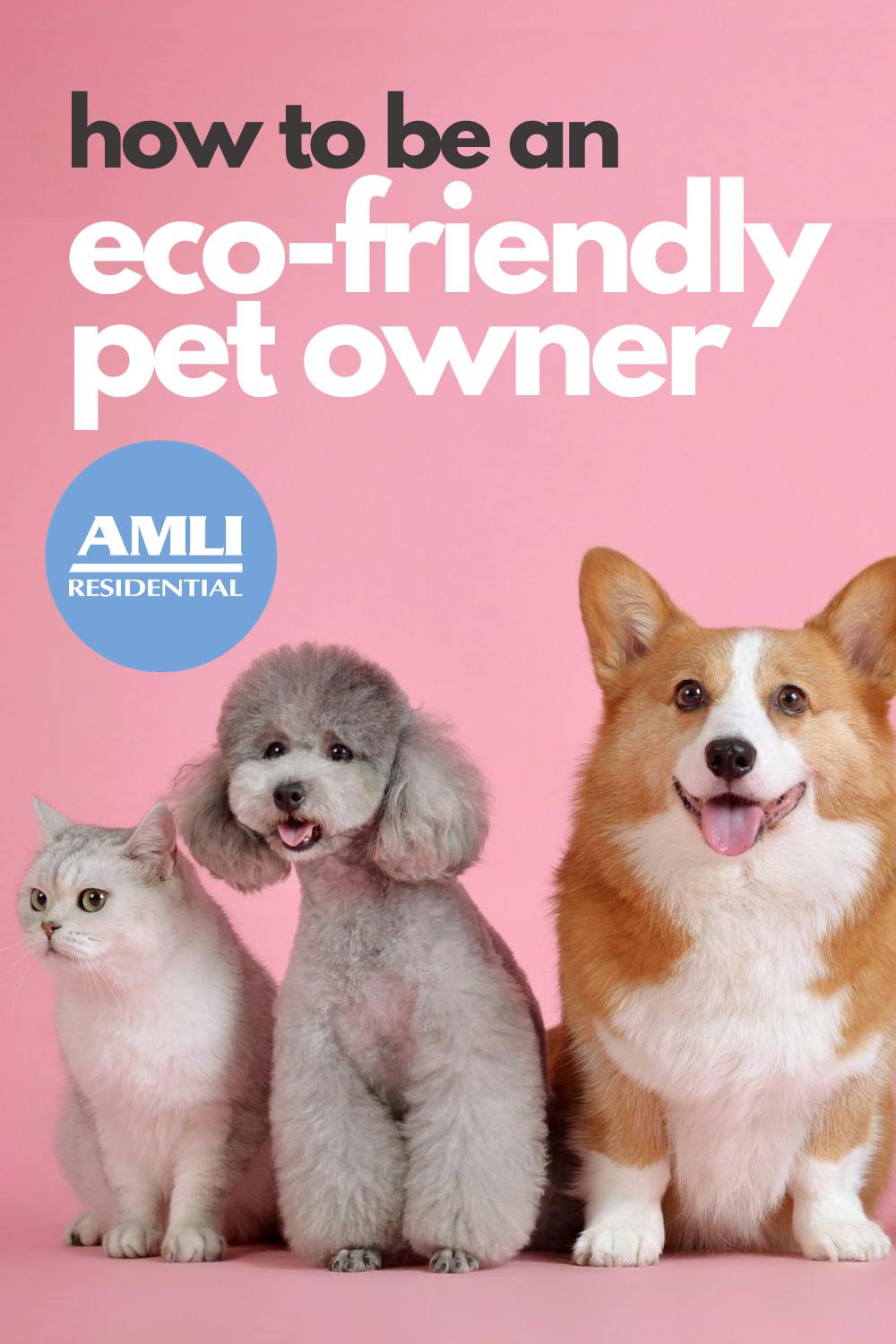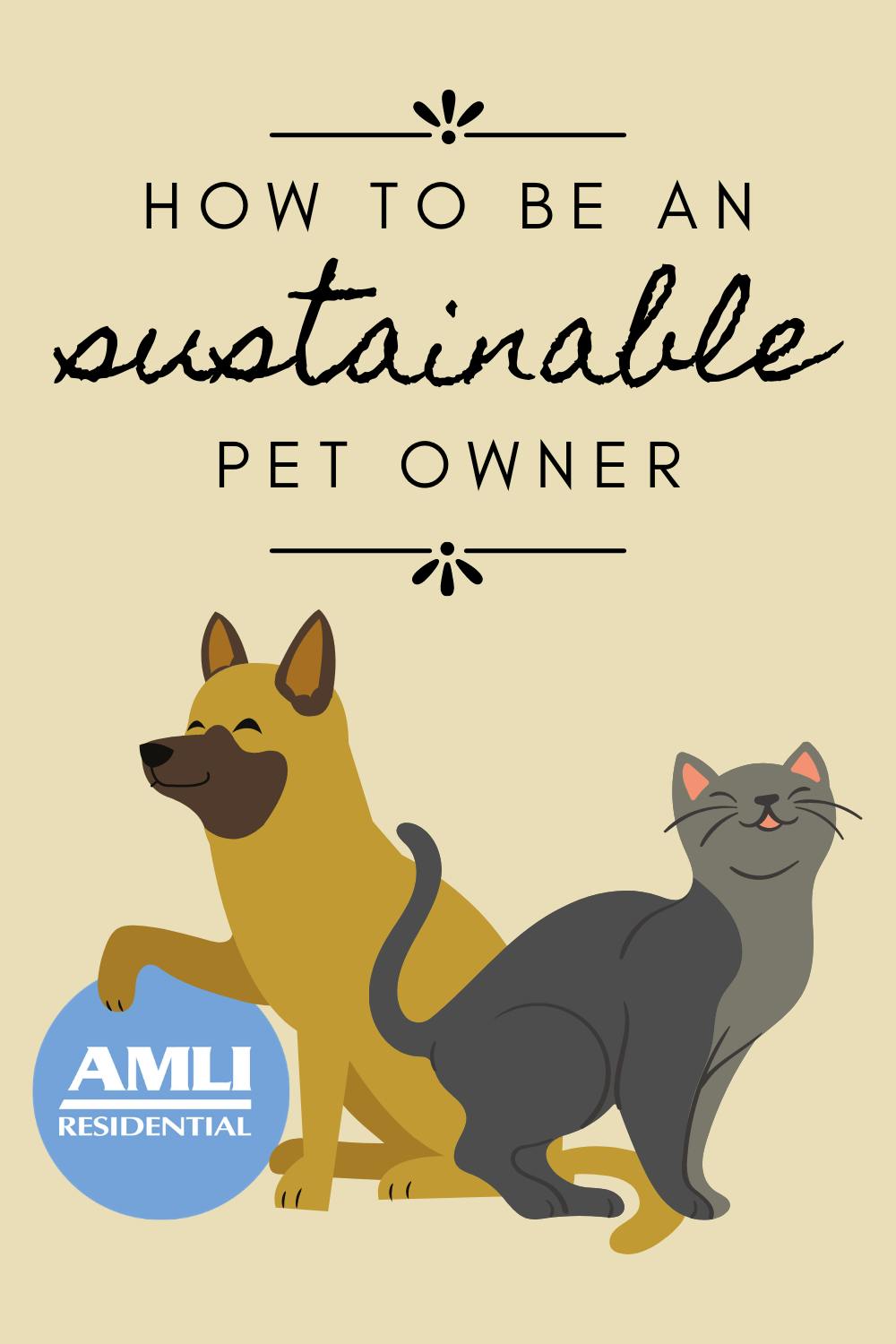There are plenty of things we love here at AMLI. We love our residents, we love our pets, we love our cities and, of course, we love our planet!
When we think of green living, we often think about the cleaning products we use and whether or not they are good for the environment (if you’re looking for some great tips and suggestions, check out our article here!). We also think about eco-friendly practices with regards to recycling and why it’s so important to recycle properly and carefully. Green living encompasses nearly every aspect of our lives from cooking to cleaning to commuting to composting, and we love to learn more about how we can protect the environment around us in everything we do.
We can be eco-friendly cooks, eco-friendly consumers, eco-friendly travelers and eco-friendly workers, just to name a few. But what about being an eco-friendly pet owner? How do we do that?
We don’t have to tell you that looking after our cats, dogs, birds, hamsters or rabbits takes plenty of love and care. After all, we would do anything for our pets! But pet ownership is not always the first thing that comes to mind when thinking about sustainable practices. Thankfully, looking after both our pets and our planet doesn’t have to be a difficult job at all, and there are plenty of ways, both large and small, that you can contribute to greener pastures for you, your pet and your planet!

How to be an eco-friendly pet owner
Spay and neuter your pets
According to the American Veterinary Medical Association, millions of dogs, cats, puppies and kittens are euthanized every year because they are unwanted in homes and on the streets. By spaying and neutering your pets, you help your furry companions avoid health problems like testicular cancer, uterine infections and breast tumors. Plus, there are no unwanted litters of puppies and kittens popping up on the streets or ending up at animal shelters.
For more information on spaying and neutering your pets, check out aspca.org.
Feed your pet sustainable food
Every dog, cat and pet is different, so there is no one-size-fits-all answer when it comes to what type of food to feed them. However, there is a sustainable food option for every kind of pet out there, from Great Danes to Siamese cats to Holland Lops.
Switch food brands
You could switch your regular pet food brand to one that uses sustainable-sourced ingredients and relies on ethical practices. Check out this website for more info on sustainable pet food brands!
Make your own pet food
If you’re up for a challenge, why not try making your own pet food? If you’re looking to go down this path, though, make sure you consult with your veterinarian extensively before trying it yourself. Your pet’s health is the number-one priority, so be two-hundred percent sure that you’re following a careful preparation and nutritional plan before giving it a go.
Buy in bulk
If you’re not able to switch brands or cook your own food for whatever reason, then you could still make a huge difference by buying your pet’s food in bulk! Instead of buying individual cans of cat food wrapped in plastic covering, buy a bulk box that you can recycle later on. These little changes can make a huge difference!
Use natural pet shampoo
We wouldn’t want to put toxic ingredients into our hair and onto our skin, so why would we do that to our dogs? Not only are organic and natural pet shampoos better for your pet’s skin and fur, but you’ll also know that you aren’t rinsing a load of chemicals and toxins down the drain. It’s also never a bad idea to ask your vet what they recommend, especially if your pet has any skin or allergy problems.
Use eco-friendly cat litter and poop bags correctly
Find a cat litter that doesn’t contain chemicals or toxins that could be harmful to humans and cats, especially if you’re in an enclosed space like an apartment. Here’s a list of some of the best natural cat litters on the market today!
When it comes to poop bags, be extra careful when choosing a brand and disposing of waste, as many self-proclaimed ‘biodegradable’ poop bags are far from being eco-friendly. For starters, poop bags that are thrown away in the trash will likely never degrade, no matter how biodegradable the plastic. Garbage in landfills is ‘mummified’ due to the lack of oxygen and the immense compression, making the eco-friendly poop bags not so eco-friendly anymore.
When you purchase a truly eco-friendly brand of poop bags, dispose of the waste at a dog-waste-only compost bin, by burying it in the ground (5 inches underground, at least!) or by taking it to a composting facility (check out this article for more tips on disposing of pet waste correctly).
Combine errands with dog walks
Why drive to the store when you could walk your dog there instead? That way, not only does your dog get its regular dose of exercise, but you cut down on carbon emissions from your car. It’s a win-win!
Skip the plastic toys
Many parents today are opting out of plastic, battery-powered toys and choosing the more natural route of entertainment. If human babies can thrive on wooden toys while saving the planet, then there’s no reason why fur-babies can’t do the same!
Find toys that are recyclable or that use natural materials, or make your own toys with old socks, rags or newspaper! Check out this article for more info on how to do both.
Looking after our pets is a priority, and so is looking after our planet. By finding ways to look after one without sacrificing the other, we can rest easy knowing that our lifestyle is beneficial to both.
Good luck!
Pin it!

Featured photo courtesy Pixabay/99mimimi


 View All Posts by Colleen Ford
View All Posts by Colleen Ford